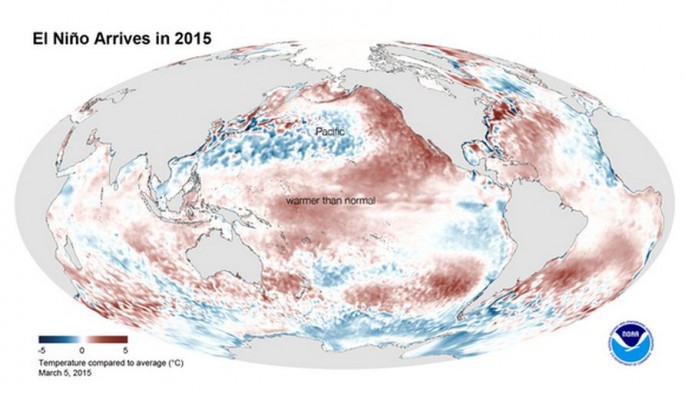The El Nino weather phenomenon is becoming stronger and could lead to severe floods in southern China and drought in the north, one of China’s disaster management agencies said on Friday.
Zhang Jiatuan, deputy head of the State Flood Control and Drought Relief department of China's Ministry of Water Resources, told the Global Times that the El Nino phenomenon this year is likely to be stronger than before.
Southern regions, particularly along Taihu Lake, Huaihe River, Songhua River and midstream of the Yellow River, are expected to suffer severe flooding, Zhang said.
China's northern regions are also likely to see drought and experience extremely high temperatures this year, according to the ministry.
El Nino involves unusually long warm or cold periods in sea surface temperatures in the Pacific Ocean.
Li Yan, head of climate and energy at Greenpeace China, said on Thursday that southern Chinese cities including those in rural areas should improve their drainage systems to prevent flooding, while the northern cities should plan their water resources in preparation for drought.
"Cities that have never encountered serious flooding will need to be careful, while local governments in the north should plan their water resources as the regions have been suffering from water shortage," she said.
Ministry of Water Resources chief Chen Lei said that the El Nino will result in extreme weather conditions and authorities will activate its alarm system and implement preventive measures to reduce damage.
According to Zhang, flooding in the south has worsened this month, with over 7.8 million people from 15 provinces and autonomous regions affected, and with 43 dead, 14 missing and 15,000 houses collapsed.
The worst-hit areas were Guangdong, Jiangxi, Hunan, Hubei and Fujian provinces, he added.
El Nino normally occurs every two to seven years and is formed because of the emission of greenhouse gases, Li said, adding that radical weather conditions will occur more frequently in the future due to climate change.
According to data from the Japan Meteorological Agency, El Nino has occurred 15 times over the past 60 years and will continue to do so into late 2015.



























